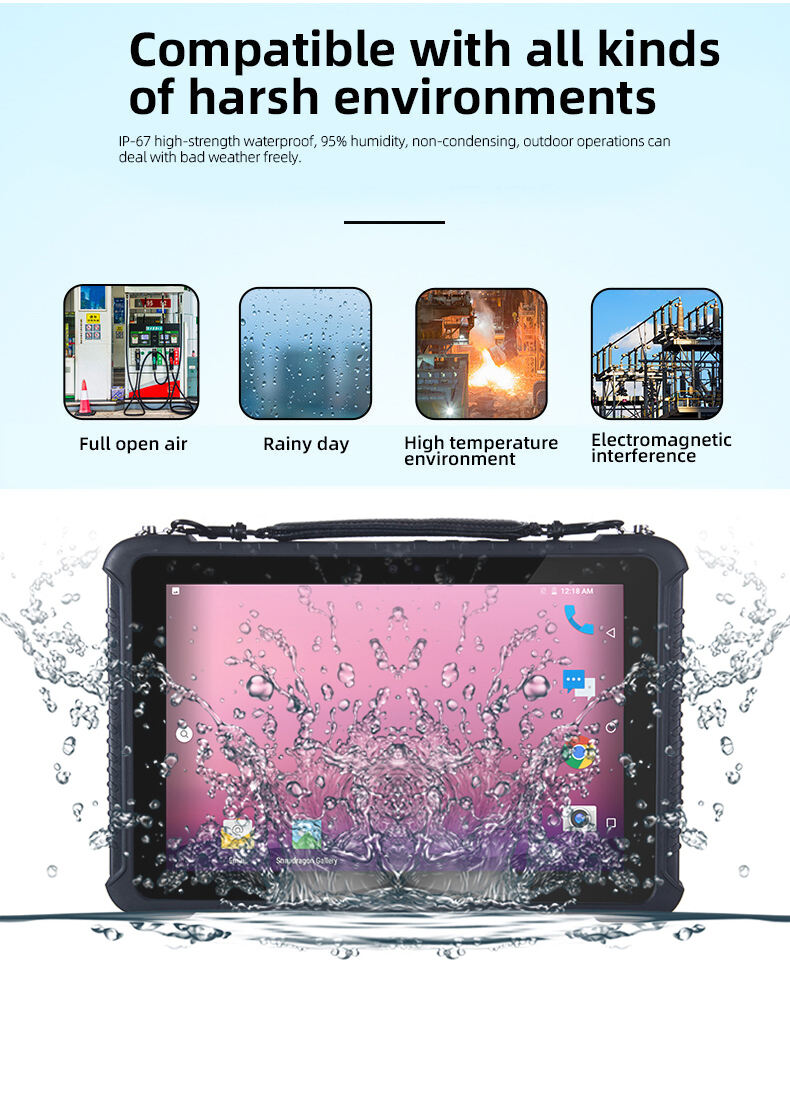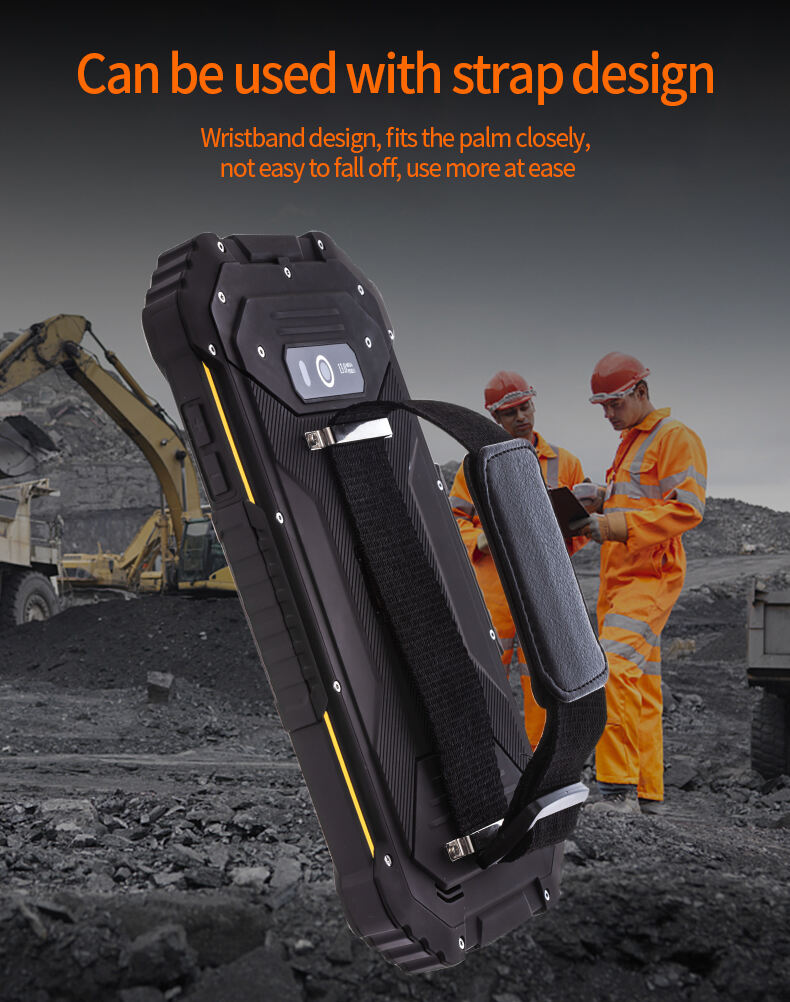What to Look for in a Rugged Tablet

Durability and Protection Standards
IP Rating for Dust and Water Resistance
The IP (Ingress Protection) rating system is crucial for determining a rugged tablet's ability to withstand dust and water exposure, particularly in challenging environments. This system assigns tablets a specific code, such as IP65 or IP68, indicating their resilience against these elements. For instance, an IP65-rated rugged tablet boasts full dust protection and resistance to water jets, making it ideal for industrial environments. In contrast, an IP68 rating offers complete dust resistance and protection against prolonged water immersion, suitable for outdoor and unpredictable conditions. Statistics show that devices with high IP ratings significantly reduce failure rates, ensuring stable performance even in the harshest environments.
MIL-STD-810G Drop and Shock Certification
The MIL-STD-810G certification is a rigorous process that assesses a rugged tablet's ability to withstand drops and shocks, ensuring it can handle physical stress in demanding situations. To achieve this certification, tablets undergo drop tests from heights like 1.22 meters and temperature trials in extreme conditions. These tests verify that devices can endure significant mechanical stress without compromising functionality. Comparatively, non-certified devices show higher failure rates in similar environments, underscoring the value of MIL-STD-810G certified rugged tablets for users requiring reliable performance in physically challenging conditions.
Operating Temperature Range for Extreme Conditions
The operating temperature range of a rugged tablet is a critical factor in its performance under extreme environmental conditions. These tablets are designed to function within a wide temperature range, often from -20°C to 60°C, ensuring reliability in both freezing and scorching settings. This capability is vital for professionals working outdoors or in industrial settings, where temperature fluctuations can compromise device performance. Experts emphasize that a reliable temperature resilience ensures continuous operation, maintaining productivity and safety. Such features are indispensable for users seeking dependable devices in outdoor applications, where environmental extremes are a norm.
Performance and Hardware Specifications
Processing Power for Rugged Tablet PC Android/Windows 10
When evaluating the processing power of rugged tablet PCs, it's crucial to consider the specific requirements for Android and Windows 10 operating systems. Rugged tablets are designed to run demanding applications smoothly, often utilizing processors like Intel and ARM. Intel processors generally provide robust performance for Windows-based applications, making them ideal for complex computational tasks or multitasking in environments like construction or fieldwork. Conversely, ARM processors, known for their energy efficiency, are commonly found in Android tablets, offering adequate power for mobile-centric operations.
Benchmark tests consistently highlight the differences in performance among rugged tablet CPUs. For instance, ARM processors excel in energy efficiency, crucial for extended field sessions, while Intel chips are preferred for high processing demands, particularly with Windows 10 tablets. The processing power directly impacts the usability and efficiency of rugged tablets in demanding roles, ensuring seamless performance in data-intensive tasks or real-time applications, such as mapping and logistics.
Storage Options: SSD vs Expandable Memory
In rugged tablets, storage options play a pivotal role in defining performance and durability. Solid State Drives (SSD) offer speed and reliability, which are essential in harsh environments. SSDs provide faster data retrieval, which is beneficial for quick access and writing of data, making them ideal for operations that require rapid processing.
However, expandable memory, typically in the form of SD cards, presents a flexible alternative, allowing users to increase storage capacity as needed. This option could be particularly useful in scenarios where data needs to be frequently offloaded or transferred. Users often report higher satisfaction with SSDs due to their robustness and reliability in sustaining extreme conditions without physical damage, while expandable options are favored for their adaptability in varying storage needs.
Long-Lasting and Hot-Swappable Battery Life
Battery life is a cornerstone feature of rugged tablets, especially for field personnel operating in remote areas where charging opportunities are scarce. A long-lasting battery ensures that the device remains functional throughout extended periods away from power sources, making it indispensable for operations in industries such as emergency services, logistics, or outdoor research.
The introduction of hot-swappable batteries significantly enhances operational efficiency. By allowing users to replace batteries without powering down the device, these systems minimize downtime and ensure continuous operation, even during critical tasks. Rugged tablets often boast extended battery life benchmarks, with some models offering upwards of 10 hours of continuous use, reinforcing their suitability for demanding field applications.
Display and Usability Features
Sunlight-Readable Screen with High Nit Value
When choosing a rugged tablet, a sunlight-readable screen with a high nit value is indispensable. A high nit value ensures that the display remains visible even under direct sunlight, which is crucial for fieldworkers operating in outdoor environments. A display with a minimum of 700 nits is recommended for outdoor use, but those with over 1000 nits offer exceptional visibility. For instance, some rugged tablets are designed with high nit screens to cater specifically to this requirement, proving invaluable in enhancing user satisfaction. Studies have shown a direct correlation between display brightness and user satisfaction, underlining the necessity of selecting a tablet that meets high brightness standards for optimal outdoor performance.
Glove-Friendly Touchscreen Technology
Glove-friendly touchscreen technology is crucial for rugged tablet usability in industrial settings. This technology allows workers to operate tablets without removing their gloves, which is a significant advantage in environments where gloves are necessary for protection. Capacitice touchscreen technology is commonly used in rugged tablets, responding to static electricity from the user’s touch, while resistive screens rely on pressure, making them useful in wet conditions. For example, in sectors like construction and logistics, this feature enhances operational efficiency by allowing seamless use of rugged tablets. User experiences highlight the importance of this feature, as it maintains productivity and safety by allowing employees to keep their protective gear on while accessing device functions.
Anti-Glare and Scratch-Resistant Coatings
Anti-glare and scratch-resistant coatings are essential features for the longevity and usability of rugged tablets. These coatings improve visual clarity by reducing reflections, which is essential for users who operate their devices in various lighting conditions. Different types of coatings are available, such as oleophobic coatings that resist fingerprints and scratches and specialized anti-glare films that minimize reflections. Experts in the field assert that the most effective coatings can significantly enhance device durability, ensuring that rugged tablets withstand the rigors of rough handling in demanding environments. By choosing tablets with these coatings, businesses can extend their devices' lifespans and maintain high-quality displays that support field operations efficiently.
Connectivity and Expansion Capabilities
5G/Wi-Fi 6 for Field Connectivity
In the ever-evolving landscape of technology, the advent of high-speed connectivity options such as 5G and Wi-Fi 6 marks a significant leap in field applications. These technologies are becoming increasingly important for rugged tablets, providing superior speed and reliability. Unlike their predecessors, which struggled with slower speeds and connectivity issues, 5G and Wi-Fi 6 offer seamless data transfer and reduced latency, crucial for professionals working in remote or industrial environments. According to industry forecasts, these advanced connectivity options are set to revolutionize industrial efficiency, allowing for real-time data access and improved communication across teams. Embracing this connectivity upgrade not only enhances the functionality of rugged tablets but also offers a competitive edge in demanding field operations.
Durable Ports for Peripheral Attachments
Durable ports play a crucial role in the functionality of rugged tablets, allowing them to connect with various peripherals essential in field operations. Having robust and versatile ports such as USB-C and HDMI ensures that devices can withstand harsh conditions while still supporting extensive data transfer and connectivity needs. These ports, known for their resilience and high-speed data handling, significantly enhance productivity. In fact, case studies illustrate how the implementation of rugged tablets with durable ports has enabled seamless integration of external devices like sensors and diagnostic tools, leading to a boost in field task efficiency. By prioritizing durable port designs, manufacturers can provide rugged tablet computers that meet the rigorous demands of industrial applications, ensuring longevity and reliability in the field.
Barcode Scanners and RFID Integration
The integration of barcode scanners and RFID (Radio Frequency Identification) in rugged tablets is indispensable for inventory and tracking purposes. These built-in technologies streamline data collection processes and make efficient inventory management possible. Notably, the use of these features has shown a marked improvement in operational efficiency within logistics and inventory fields. By enabling real-time tracking and accuracy, businesses can minimize errors and increase productivity. For example, logistics companies have reported significant reductions in loading and unloading times due to the swift and precise data processing capabilities of rugged tablets equipped with these technologies. The advantages of barcode scanners and RFID integration are evident, providing a robust solution for modern-day tracking and inventory challenges.




